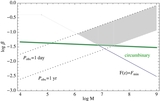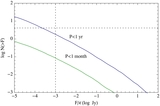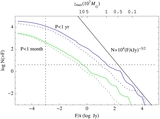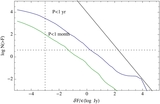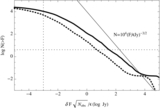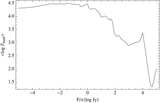Image Details
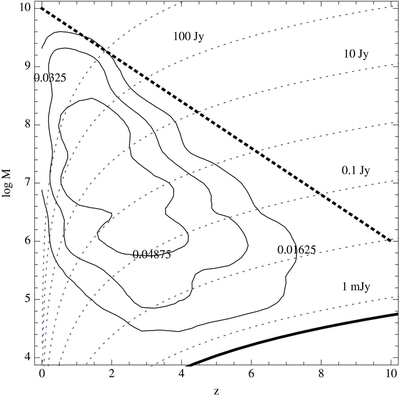
Caption: Figure 4.
Sources with orbit period modulation Ib: mass–redshift distribution: contours of the mass–redshift distribution (solid black)
of all binary black hole outflows with
F/
![]() > =0.5 mJy (thick black curve) and observed periods
P
obs between 1 year and 1 minute. This scaled flux limit corresponds to the fiducial VAST survey sensitivity (
F = 0.5 mJy) for the most optimistic conversion of outflow to radio power (
> =0.5 mJy (thick black curve) and observed periods
P
obs between 1 year and 1 minute. This scaled flux limit corresponds to the fiducial VAST survey sensitivity (
F = 0.5 mJy) for the most optimistic conversion of outflow to radio power (
![]() = 1). Contours are shown at 1/4, 1/2, and 3/4 of the maximum value (
dN/
dlog
Mdz
= 1). Contours are shown at 1/4, 1/2, and 3/4 of the maximum value (
dN/
dlog
Mdz
![]() 0.06). The distribution shown is smoothed, built by convolving a Gaussian kernel with the underlying merger tree, with smoothing
lengths Δlog
M
0.06). The distribution shown is smoothed, built by convolving a Gaussian kernel with the underlying merger tree, with smoothing
lengths Δlog
M
![]() 0.3 in mass and (Δ
z = 0.3) in redshift. Also shown are contours of the largest possible (Eddington-limited) flux at a given redshift:
F/
0.3 in mass and (Δ
z = 0.3) in redshift. Also shown are contours of the largest possible (Eddington-limited) flux at a given redshift:
F/
![]() =
L
edd/4π
d
2
L
ν for 10
−3, 10
−2, ..., 10
3 Jy (dotted blue, bottom to top). Finally, the thick dotted black line is an empirical relation for the maximum SMBH binary
mass vs. redshift (Equation (10)).
=
L
edd/4π
d
2
L
ν for 10
−3, 10
−2, ..., 10
3 Jy (dotted blue, bottom to top). Finally, the thick dotted black line is an empirical relation for the maximum SMBH binary
mass vs. redshift (Equation (10)).
Copyright and Terms & Conditions
© 2011. The American Astronomical Society. All rights reserved.


